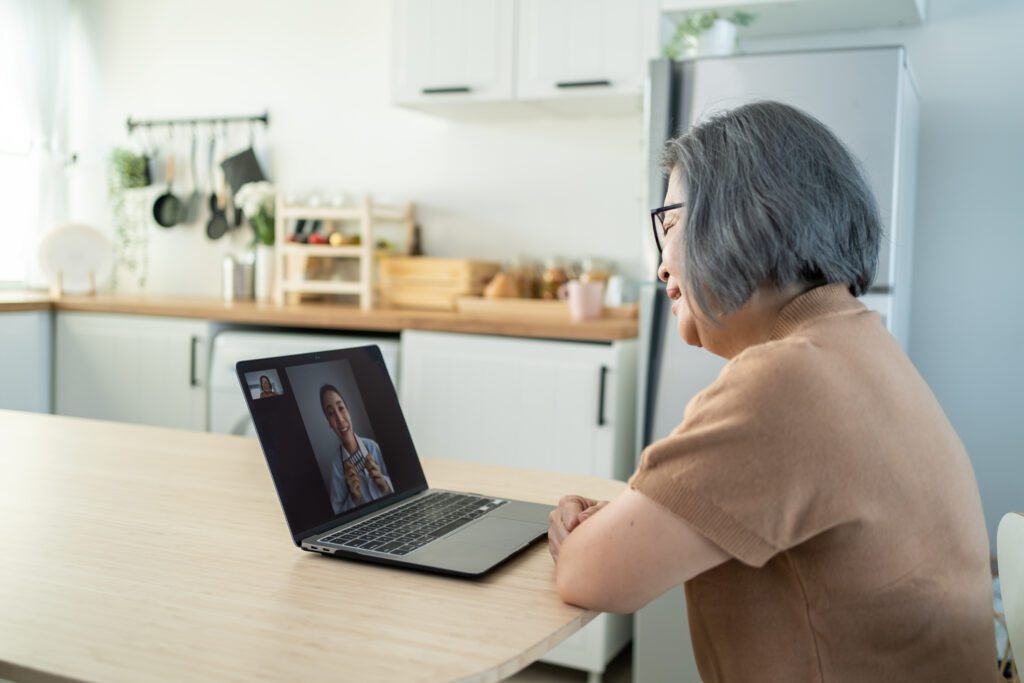
One of the many transformational shifts brought on by COVID-19 was the widespread adoption of telehealth technology. Though it existed as a tool previously, the pandemic prompted patients, policymakers, and providers to rapidly adjust their approach to telemedicine, in some cases requiring major effort and investment to expand infrastructure.
The Health Fund and our philanthropy partners supported this work in Michigan through a series of rapid telehealth expansion grants. Many of these investments supported the permanent expansion of telehealth in different regions of our state.
As telehealth moves from an emerging technology to a more permanent fixture of the health care landscape, the Health Fund and the Ethel & James Flinn Foundation have engaged the Institute for Healthcare Policy and Innovation at the University of Michigan to conduct a wide-ranging study on its use, identify gaps in access, and make recommendations to maximize its benefits for people in Michigan.
The resulting report — Telehealth in Michigan — is a comprehensive collection of data that provides insights about the state of telehealth and its impact on healthcare access for Michigan residents.
Some key highlights from the report:
After pandemic surge, use leveled off
Not surprisingly, usage of telehealth spiked during the COVID-19 pandemic, which the report found consistent among people with coverage through Medicare, Medicaid, and commercial insurance. Following this surge, the proportion of telehealth visits has gradually declined over time, and currently stands at approximately 11 percent, 13 percent, and 17 percent of all outpatient evaluation and management visits for Medicare, Medicaid, and commercially insured patients, respectively.
These numbers suggest that telehealth is currently serving as a complementary tool, while in-person appointments have largely returned to pre-pandemic levels.
Telehealth increases behavioral health access
One notable area where telehealth use continues to be high is the delivery of behavioral health services. Many counties in Michigan face significant shortages of behavioral health care providers, making it difficult for those who need help to get it.
Telehealth expansion has undeniably enhanced access to behavioral health services. First, it has provided a means of delivering care to areas in Michigan with a high demand for services. Second, it’s extended access to counties where there are shortages of behavioral health providers, bringing these much-needed services to underserved communities.
In 2021, approximately half of behavioral health visits in areas of the state with a shortage of providers took place via telehealth, with many receiving services from a provider outside their county.
Policy changes can help maximize benefits
Prior to the pandemic, telehealth policy restricted use of telehealth to specific settings like hospitals and clinics in rural communities. Policy changes tied to COVID-19 in 2020 removed these restrictions and enabled patients to use telehealth in their homes, with the result of dramatically scaling up use in non-rural and rural counties alike.
Adjustments to policies placing limits on using telehealth to see out-of-state providers could produce benefits on a smaller scale, in particular through negotiated agreements with other midwestern states and Florida, where Michiganders are most likely to seek care. Likewise, policy efforts to expand broadband Internet access — which is correlated with telehealth use — could produce positive impacts on health as well.
Implications for the future
To learn more about the report’s findings, join us for a webinar with the authors on Thursday, August 10. They’ll do a deep dive into the data and share their implications for telehealth’s future in our state.
